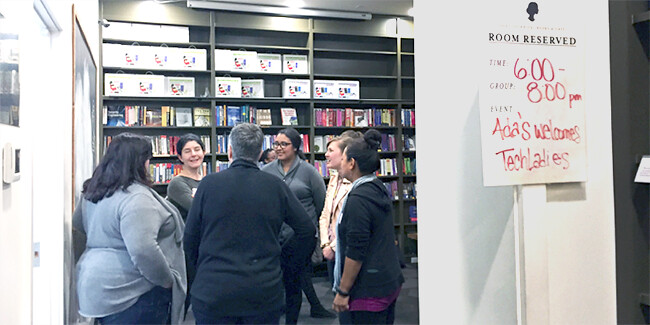A contingent of our team recently attended the 2018 State of The Map International Conference in Milan, Italy. Attendance covered the spectrum in the OSM community, from original die hard individual contributors to more recent corporate contributors – it was an interesting mix that came with a bit of tension at times. With three of us in attendance, we were able to cover most of the sessions over the weekend (+Monday). This post includes a few of our takeaways from the conference.
The heart of OSM is still beating.
The incomparable Kate Chapman shared the stage with fellow OSM super supporter, Heather Leson, to set the tone for the conference and remind everyone what the community is about – for all of us old and new – which is to build a free and open map of and for the world! They gave great examples that demonstrated just how big and diverse the OSM community is getting - from OpenCatMap to OSM Cake Blogs – OpenStreetMap is a platform that will support whatever you can imagine.
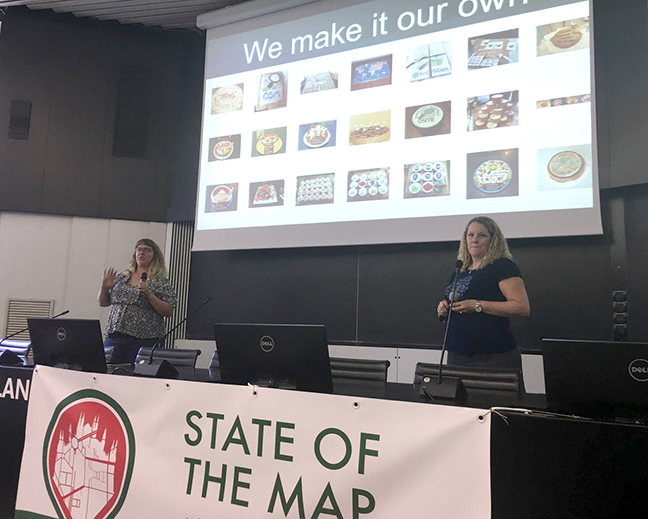
Academia is getting more curious about OSM.
A whole academic/scientific track of presentations gave a good view into current OSM research. From analyzing quality to detecting unhelpful edits, the speakers covered a wide scope. A standout presentation that was particularly interesting was Jennings Anderson’s work on contributor analysis. Taking a historical view into edits, he’s identifying some interesting lifecycle behaviors within the community that reveal the maturation process an editor goes through from getting one’s feet wet with a few specific features or tags to becoming an uber power editor like Clifford Snow. We were also fascinated by Stephen Kellar’s algorithm built to classify and generate self-defined Areas-of-Interest using OSM’s street network, and his results in comparison with GMaps.
Rejoice, the Robot Mappers are here.
Microsoft, Facebook and Mapillary all shared talk about their current efforts to incorporate AI/ML into the OSM effort. Each have different foci (feature and geography wise) and methods… and all are doing really cool stuff. Don’t worry, humans are still required. The robots are mainly saving us from carpal tunnel and boredom. Robots may be sowing the seeds of new OSM features, but the human community is making them into flower.
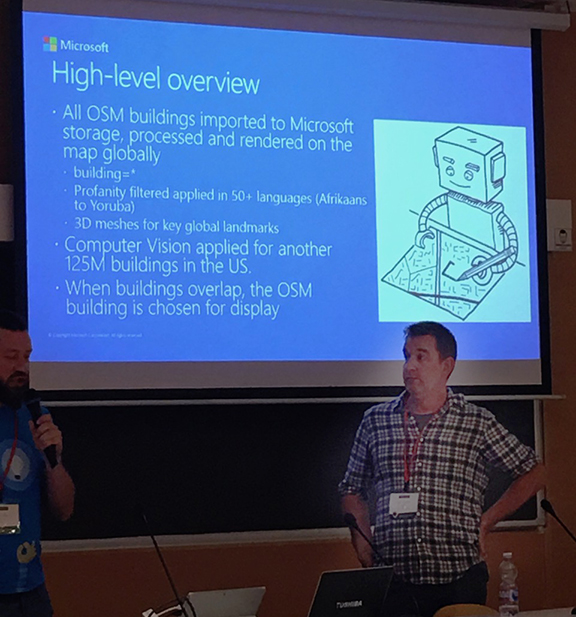
Evolving towards bigger and better things.
With growth comes change. Jubal Harpster and Oisin Herriott demonstrated how they have been extending JOSM and iD Editor to enhance and better support their massive editing workflows. Brian Housel highlighted all of the exciting changes to the iD Editor, including the incorporation of 360! Jochen Topf discussed his thoughts on how OSM has grown up, and that there needs to be some changes to better handle the growing community and evolving way in which folks use OSM. He is interested in starting a conversation with the community to try to make the right changes.
Also, in an effort to classify power grids in Pakistan and Nigeria, Development Seed created a library for generating labels from OSM AQ vector tiles to use as machine learning training sets.
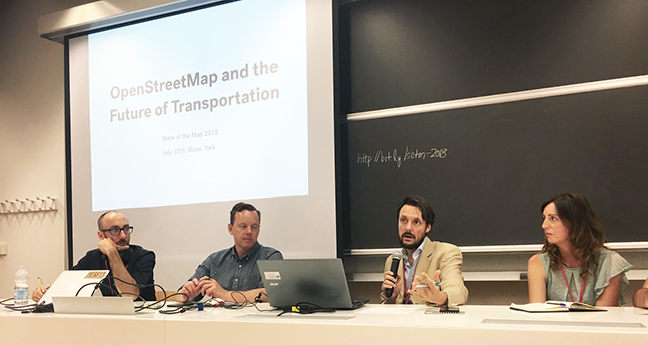
OpenStreetMap is growing up.
OSM isn’t just for pretty base maps anymore. People will continue to crank out piles of tiles based on OSM data, but higher order use cases are taking shape quickly. Several presentations focused on routing and navigation applications. Geofabrik’s Michael Reichert did an excellent presentation on the current state of routing on rails with OSM. Andrea Capata of Immobiliare.it shared how they’re making a business out of switching their enterprise mapping customers to OSM-derived products and services. It’s great to see a robust and growing consulting business is thriving while always giving back!
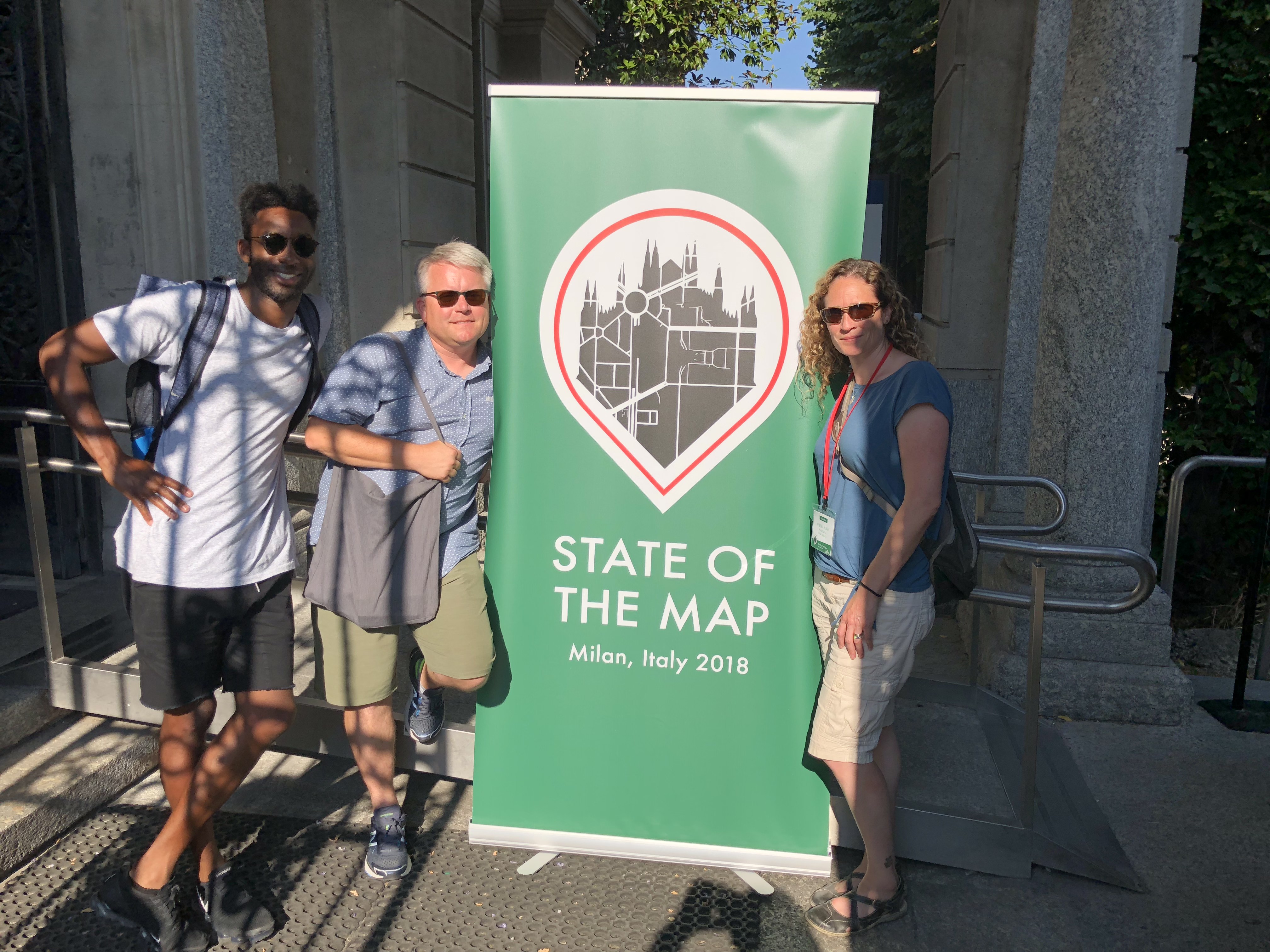
See you in Detroit.
This year’s 2018 State of the Map US conference will be packed with innovators transforming the use of OSM in government, business and the community. We’re especially excited to announce that our very own Senior GIS Analyst, Monica Brandeis, will be among the speaker lineup! There, she’ll share her approach to using heat maps to visualize gaps in OSM data quality.
For additional information on Monica’s talk – check out her abstract: (https://2018.stateofthemap.us/program/the-map-quality-measurement-initiative-a-heat-map-approach-to-visualize-gaps-in-map-quality.html).


